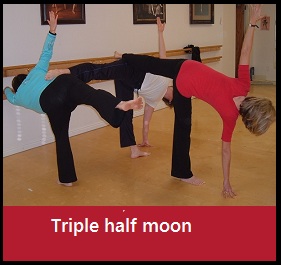For this year, we desire to root and ground ourselves in traditional yoga philosophy and ethics. This will increase the meaning behind our yoga practice and increase our ability to make yoga a living daily practice.
In the ancient tradition, yoga practice was for the purpose of union with the divine. It was accomplished through eight steps or limbs. You may have heard of the eight limbs of Ashtanga yoga. Each limb is a step moving upwards and building upon each other.
We have been practicing the third limb of yoga – Asana, the physical postures. We will now learn more about the first and second limbs of yoga, Yama and Niyama. During class we will also practice the basics of pranayama or breathing practice. This is the fourth limb of yoga.
Yama and Niyama are the ethical guidelines for living in harmony with others and with yourself. This moral code is important for yogis to learn and practice BEFORE undertaking Asana or Pranayama practice.
For those who regularly attend our Rexburg Yoga classes, we have known most of you long enough to be assured that you already live and practice these ethical standards even if you don’t know the specifics. That is why we have had no problem in practicing and guiding the class in Asana practice.
We hope that you will enjoy learning more about Yama and Niyama this year in our Rexburg Yoga classes
At Rexburg Yoga one of our favorite topics to discuss before class is gardening. To introduce the Yamas and Niyamas, let’s look at our soul as being a garden. The Yamas are the weeds. Yama in sanskrit means to rule, control or restrain. These are the behaviors we want to restrain and keep under control. Just like we want to restrain, tame and keep the weeds under strict control. When we grow a garden outdoors in our back yard, there will always be weeds and the best we can do is to restrain and keep them under control.
Living in this world, we will all have a variety of behaviors towards others and it is beneficial to curb the behaviors that are destructive and destroys community. These restraints are the Yamas.
* Ahimsa (non-violence)
* Satya (truth)
* Asteya (non-stealing, or non-cheating)
* Brahmacharya (self-restraint and moderation in all you do)
* Aparigraha (non-coveting, including no envy, or jealousy).
In Sanskrit Niyama is non-restraint or the actions and observances. These are behaviors that we consciously practice in a personal way and as we do that we are planting the seeds of an abundant life. The Niyamas would be the seeds of flowers and vegetables in our soul garden. Yamas deal with relationships with others. Niyamas deal with the personal internal practices.
* Sauca (Purity)
* Santosha (Contentment)
* Ishawar-Pranidhana (Spiritual devotion)
* Tapas (Discipline)
* Svadhyaya (study of the Self)
Here is a nice video that is an overview of the Yamas and Niyamas






Pingback: Shalabhasana – Locust | Rexburg Yoga